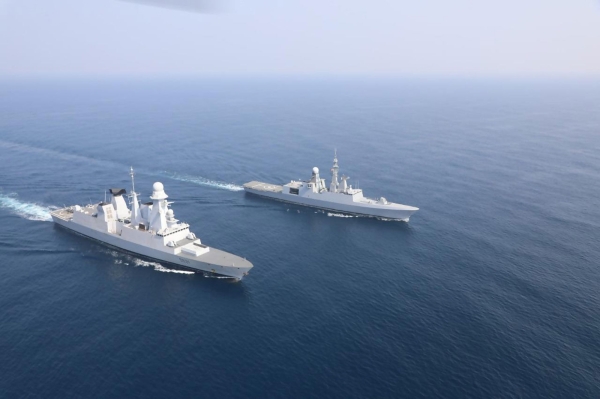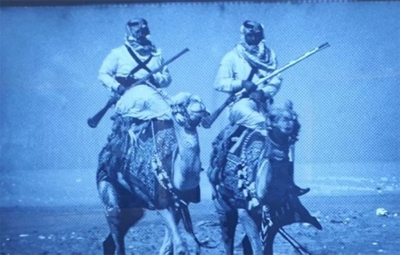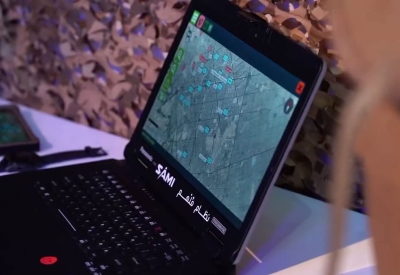

The Saudi Naval Aviation is a branch of the Royal Saudi Naval Forces, established in 1985. Over the following decades, it underwent development to keep pace with the Kingdom of Saudi Arabia's advancements in defense and security within its vital areas in the Red Sea and the Arabian Gulf. It has also participated in rescue operations domestically.
Establishment of Saudi Naval Aviation
The establishment of Saudi Naval Aviation began alongside the Royal Saudi Naval Forces' acquisition of Sawari I Project ships in the 1980s. The project included frigates and supply ships, which required the arming of these vessels with helicopters on board to enhance their combat capabilities (frigate ships) and to engage in over-the-horizon targeting (OTHT). These helicopters are equipped to target enemy submarines with air-to-surface missiles, which they could carry and guide, as well as to conduct detection, reconnaissance, and rescue missions.
The Naval Forces launched a program to train pilots and specialized technicians for these aircraft by establishing and equipping the necessary infrastructure. Officers and personnel were sent for training in the United States, France, and Pakistan, in addition to specialized colleges and institutes within the Kingdom. The beginnings were in 1985, with the arrival of the first ships from the "Sawari I" Project to Saudi waters. The Naval Aviation initially had a single building that housed command operations linked to the Western Fleet. This was later expanded to include an operations squadron, an aircraft hangar, a runway, a control tower, parking areas, and other technical facilities.
The first Naval Aviation Wing began operations at King Faisal Naval Base in Jeddah in 1985. With the growing number of pilots and technicians, a technical specialties school for Naval Aviation was established, leading to the creation of the second Naval Aviation Wing in the Eastern Province in 1987.
Naval Aviation Affairs Administration
The Naval Aviation Affairs Administration was established under the Naval Forces Command in 1989. It was linked to the Naval Operations Authority to oversee the training and deployment of pilots, technicians, and aircrews.
In 1990, the Naval Forces expanded by acquiring another type of helicopter for combat and logistical purposes, known as "al-Baraq" project. The first of these, the "Super Puma," arrived in al-Jubayl from France following the establishment of marine infantry and special forces units. Helicopters were no longer simply an extension of the ships; they became a secondary dimension within the Naval Forces. The "Super Puma" helicopters support Royal Saudi Navy ships by conducting reconnaissance and over-the-horizon targeting, as well as providing support to marine infantry and special naval security units. The "Super Puma" helicopters were equipped to carry soldiers and equipment, as well as to provide fire support.
In terms of numbers, missions, and ground equipment, Naval Forces Aviation expanded in 1995 by establishing simulators in both Jeddah and al-Jubayl. These simulators realistically replicate aircraft conditions to train pilots and technicians to handle various scenarios.
Naval Aviation Command
The name "Naval Aviation Affairs Administration" was changed to "Naval Aviation Command" in 1999, and it was placed directly under the command of the Naval Forces Commander. In 2010, the name "Naval Aviation Wings" was changed to "Naval Aviation Group" for both the Eastern and Western fleets. In 2011, Panther search and rescue helicopters joined Naval Aviation, replacing the aging Dauphin helicopters used for search and rescue operations.
In 2018, the Kingdom acquired helicopters with advanced capabilities for surface and subsurface warfare, enhancing the Naval Forces' ability to address all challenges and threats in the region.
Helicopters in the Naval Forces
- Dauphin combat helicopters: These are medium-class helicopters equipped for deployment on frigates and supply ships. They are outfitted to handle small surface targets, such as boats, with air-to-surface missiles through a targeting system capable of detecting, identifying, and addressing targets. The Dauphin helicopters are also equipped with a Magnetic Anomaly Detector (MAD) for submarine tracking and can engage submarines using onboard or frigate-mounted torpedoes.
- Dauphin Search and Rescue Helicopters: These helicopters are equipped with a navigation radar and a hoist system (winch). They operate from Royal Saudi Navy ships or naval bases. These helicopters have assisted in rescue operations during disasters and floods in various provinces of the Kingdom.
- Panther Search and Rescue Helicopters: These helicopters are equipped with an automatic hovering system and night-vision equipment. They operate on Royal Saudi Navy ships, frigates, and supply vessels, as well as from naval bases. They have replaced the Dauphin helicopters.
- Super Puma Helicopters: These are medium-class helicopters with extended air time capability. They come in three variants, the first of which is the F1 model, equipped with radar for detecting surface targets and a defensive electronic warfare system that alerts the crew to radar tracking. These helicopters can carry guided missiles and machine guns, and they are also capable of search and rescue operations when fitted with hoisting equipment. The second variant, the M1 model, is designed for transporting equipment and soldiers, deploying them via parachute drops or rope descent. This model is equipped with thermal night vision or infrared systems and also carries guided missiles and machine guns. It is capable of performing search and rescue operations when outfitted with hoisting equipment. The third variant, the B1 model, is equipped for tactical operations, troop transport, maritime support, parachute drops, and rope descent deployment. It is fitted with machine guns and advanced missiles and is capable of night operations using thermal imaging systems.
- MH-60R Seahawk Multi-Mission Combat Helicopters: These are multi-role naval combat helicopters with high combat capabilities. They also perform secondary tasks, such as supply, search and rescue operations, and communications. They were purchased from the United States. These helicopters are capable of engaging surface and subsurface targets and operate from ships and military bases. In 2018, the Naval Forces launched the first aircraft from this project.
- Remotely Piloted Aircraft: These are long-range reconnaissance aircraft with extended continuous flight hours, far surpassing those of manned aircraft. The Naval Forces introduced them to keep pace with advancements in defense technologies, enhance combat capabilities, and leverage the strategic importance of unmanned systems. In recent years, the Naval Forces have acquired two fixed-wing unmanned aerial systems.
Missions of Saudi Naval Aviation
Naval helicopters played a role during the Kuwait Liberation War, operating from ship-based and standalone aircraft. During the Kuwait Liberation War, naval helicopters operated as part of Naval Task Group 77 at Ras Mishab Port. They conducted patrol and surveillance along the coast opposite the port up to Khafji, supported patrol boats from Group 77, and transported high-ranking officials to coalition command sites and into Kuwait after its liberation.
Naval helicopters played an active role on the southern borders alongside marine infantry, particularly in transporting soldiers and their equipment, supported by a squadron with firepower capabilities. Naval aircraft also played a primary role in patrol and reconnaissance missions due to navigation challenges in certain areas. They were crucial for tracking, detecting, reporting, and, when necessary, engaging intruders.
Additionally, Naval Aviation participated in rescue operations during floods and rain disasters, reaching areas that were otherwise difficult to access.
Related quizzes
Related articles

